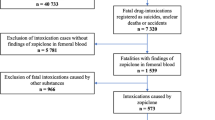Abstract
Background. Mercury poisoning presents a variety of clinical pictures depending on chemical structure, the route of exposure, amount absorbed and individual factors. Thus, an injection of metallic mercury can be considered relatively harmless in contrast to inhalation of mercury vapor. Injection of elemental mercury is rare, and a total of only 78 cases have been reported in the literature over the period 1923–2000.
Case report. We report a suicide attempt by intravenous injection of approximately 8 g metallic mercury. By X-ray examination widespread multiple mercury shadows were visible in the whole lung and also in the subcutaneous region of the cubital fossa, the small pelvis and the right hypogastrium. Mercury excretion after treatment with 2,3-dimercaptopropane-1-sulfonate (DMPS) was significantly higher than in occupationally exposed workers.
Clinical symptoms. The patient showed symptoms typical of acute mercury intoxication, including gastroenteritis, ulceromembranous colitis and stomatitis mercuralis. No biochemical abnormalities in hepatic or renal function occurred, despite the persistence of metallic densities in the body. The patient's lung function was normal. The patient transitionally developed erethismus and tremor mercuralis. After 1 month of DMPS treatment, the mercury levels in blood were still high and the tremor was persistent. Three years after the suicide attempt the surgical removal of residual mercury in the left fossa cubitalis was performed. The extirpation of residual mercury was successful in cutting the mercury levels to almost half. After the operation the patient showed no symptoms of chronic mercury intoxication.
Conclusions. Since only 1 mg of mercury per day could be removed with DMPS treatment, it can be calculated, that it would take about 8,000 daily treatments to remove a total of 8 g solely by DMPS. Although DMPS itself does not dissolve the metallic deposits, it may considerably reduce the blood level of mercury and may therefore mitigate clinical symptoms, albeit transitorily. We therefore recommend that in cases of symptomatic metallic mercury injections, where the mercury cannot be removed by surgery, the patient's condition should be managed by repeated long-term DMPS treatment in order to control blood mercury levels.
Similar content being viewed by others
Author information
Authors and Affiliations
Additional information
Electronic Publication
Rights and permissions
About this article
Cite this article
Winker, .R., Schaffer, .A., Konnaris, .C. et al. Health consequences of an intravenous injection of metallic mercury. Int Arch Occup Environ Health 75, 581–586 (2002). https://doi.org/10.1007/s00420-002-0363-z
Received:
Accepted:
Issue Date:
DOI: https://doi.org/10.1007/s00420-002-0363-z




